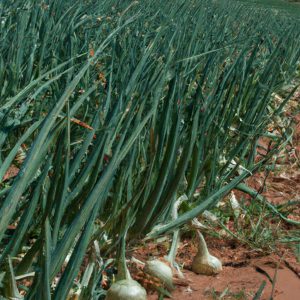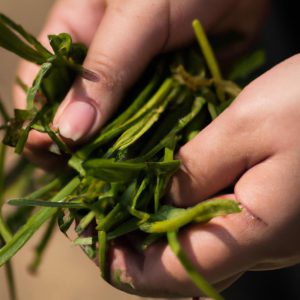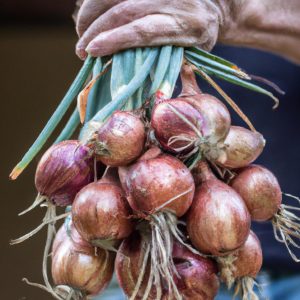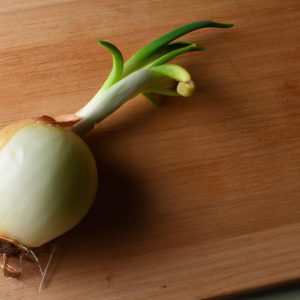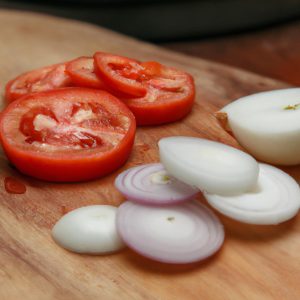Dehydrating onions is a simple yet valuable process that can save you time and money in the long run. Whether you are a novice or an experienced chef, dehydrated onions are an excellent addition to your pantry. They provide the same flavor and aroma as fresh onions but with the added convenience of a longer shelf life.
Dehydrated onions are a great alternative to fresh onions, especially when they are out of season. They are also a great option for those who want to reduce food waste and save money by buying onions in bulk. Not to mention, dehydrating onions is an easy and effective way to preserve the nutritional value of onions without losing any of the health benefits.
In this comprehensive guide, I will walk you through everything you need to know about dehydrating onions. From preparing onions for dehydration to the different methods of dehydrating onions, storing dehydrated onions, using them in cooking, and more, you will learn all the essential information you need to master the art of dehydrating onions. So, let’s get started!
Preparing Onions for Dehydration

Dehydrating onions requires some preparation to ensure that you get the best results. Follow these steps to prepare your onions for dehydration:
Choosing the Right Type of Onion
When it comes to dehydrating onions, not all onions are created equal. You want to choose onions that are firm and free of bruises or soft spots. Yellow onions are the most commonly used onions for dehydrating, but you can also use white or red onions depending on your preference.
Cleaning and Peeling Onions
Before you begin slicing your onions, make sure to clean them thoroughly. Rinse them under cold water and pat them dry with a paper towel. Then, peel off the outer layer of skin and discard it. Once your onions are clean and peeled, you can start slicing them.
Slicing Onions for Dehydration
To get the best results, you want to slice your onions evenly and uniformly. You can use a sharp knife or a mandoline slicer to slice your onions. It’s important to slice your onions thin, about 1/8 inch thick, to ensure that they dehydrate evenly. You can slice your onions into rings or half-moons depending on your preference.
By following these simple steps, you can prepare your onions for dehydration like a pro. The next step is to choose the method of dehydrating that works best for you.
Methods of Dehydrating Onions

When it comes to dehydrating onions, there are a few different methods you can use. Each method has its pros and cons, but ultimately, it’s up to you to decide which method works best for you and your kitchen.
Dehydrating Onions in the Oven
Dehydrating onions in the oven is a straightforward method. Begin by preheating your oven to the lowest temperature possible, usually around 140°F (60°C). Then, thinly slice your onions and place them in a single layer on a baking sheet lined with parchment paper. Make sure the onions are not touching and leave the oven door slightly open to allow the moisture to escape. Depending on the thickness of your onions, they should be fully dehydrated within 8-12 hours.
One of the benefits of dehydrating onions in the oven is that it’s a simple and cost-effective method. However, it’s important to note that dehydrating onions in the oven can be time-consuming and may require a lot of energy, which can be expensive in the long run.
Dehydrating Onions Using a Dehydrator
Dehydrating onions using a dehydrator is another popular method. Begin by slicing your onions into thin, uniform pieces, then place them on the dehydrator tray in a single layer. Set the dehydrator to the recommended temperature, usually around 135°F (57°C), and let the onions dry for 6-12 hours until they are fully dehydrated.
One of the benefits of using a dehydrator is that it’s a more energy-efficient method than dehydrating onions in the oven. Additionally, using a dehydrator allows you to dehydrate a larger quantity of onions at once, making it more efficient when dehydrating in bulk.
Dehydrating Onions in the Sun
Dehydrating onions in the sun is a traditional and cost-effective method. Begin by slicing your onions into thin pieces and place them on a clean and dry surface. Make sure the onions are not touching and cover them with a thin mesh to protect them from insects and other contaminants. Then place the onions in direct sunlight and allow them to dry for 2-3 days, depending on the weather.
One of the benefits of dehydrating onions in the sun is that it’s a cost-effective method that requires no additional equipment. However, it’s important to note that this method is heavily dependent on the weather and may not be suitable for all climates.
No matter which method you choose, it’s important to make sure your onions are fully dehydrated before storing them to prevent spoilage.
Storing Dehydrated Onions

Dehydrated onions are a staple in many kitchens because of their long shelf life and versatility. However, proper storage is essential to maintain their flavor, aroma, and texture. Here are some tips on how to store your dehydrated onions properly:
Proper storage techniques for dehydrated onions
The best way to store dehydrated onions is in airtight containers such as glass jars with tight-fitting lids or plastic containers with airtight seals. Before storing, make sure the dehydrated onions are completely cool and dry. Any moisture left in the container can cause the onions to spoil or develop mold.
Length of time dehydrated onions can be stored
Dehydrated onions can last up to a year if stored correctly. However, the longer they are stored, the more their flavor and aroma will diminish. It’s best to use them within six months for the best flavor and aroma.
How to rehydrate dehydrated onions
Rehydrating dehydrated onions is easy and can be done in a matter of minutes. To rehydrate, add the desired amount of dehydrated onions to a bowl and cover with hot water. Let them soak for 15-20 minutes or until they are soft and plump. Alternatively, you can add them directly to soups, stews, or other dishes with enough liquid to rehydrate them as they cook.
By following these tips, you can ensure that your dehydrated onions stay fresh and flavorful for as long as possible. So, don’t hesitate to stock up on dehydrated onions and enjoy their long shelf life and versatility in your cooking.
Using Dehydrated Onions in Cooking
Dehydrated onions are versatile and can be used in various dishes to add a delicious and savory flavor. Here are some culinary uses of dehydrated onions:
Culinary uses of dehydrated onions
- Soups and stews: Dehydrated onions add a rich and robust flavor to soups and stews. They are an excellent substitute for fresh onions and can be added directly to the pot.
- Casseroles and baked dishes: Dehydrated onions can be used in casseroles and baked dishes to add a unique flavor. They can be mixed with breadcrumbs to create a crispy topping or added to the filling for added flavor.
- Sauces and gravies: Dehydrated onions can be used to make sauces and gravies. They add a deep and intense onion flavor that cannot be achieved with fresh onions.
Tips for using dehydrated onions in recipes
- Rehydrate the onions before using: To get the best flavor and texture out of dehydrated onions, it’s best to rehydrate them before adding them to your recipe. Soak them in warm water or broth for about 10-15 minutes until they are soft and plump.
- Adjust the amount of onions: Since dehydrated onions are more concentrated than fresh onions, it’s important to adjust the amount you use in your recipe accordingly. Start with a small amount and add more as needed.
- Use them as a flavor enhancer: Dehydrated onions are an excellent way to add depth and complexity to your recipes. Use them in combination with fresh onions to create a well-rounded flavor.
How dehydrated onions compare to fresh onions in recipes
While fresh onions are a staple in many kitchens, dehydrated onions offer several advantages. They have a longer shelf life, are more convenient to use, and can be used in a variety of dishes. Additionally, dehydrated onions have a more concentrated flavor, which can be beneficial in some recipes. However, they should not be used as a complete replacement for fresh onions, as they lack the crisp texture and sweetness of fresh onions.
Conclusion
In conclusion, dehydrating onions is a simple yet effective way to preserve their flavor and aroma for a longer time. By following the methods outlined in this comprehensive guide, you can easily prepare, dehydrate, store, and use dehydrated onions in your cooking and enjoy their benefits.
Dehydrated onions are a versatile ingredient that can be used in a variety of recipes, from soups and stews to dips and marinades. They not only add flavor and aroma to your dishes but also provide several health benefits.
So, the next time you have a surplus of onions or want to stock up on this pantry staple, consider dehydrating them. With the right techniques and storage methods, you can enjoy the convenience and benefits of dehydrated onions for months to come.
Thank you for reading this article on how to dehydrate onions. For more information and tips on onions, visit our website onionfacts.com.

